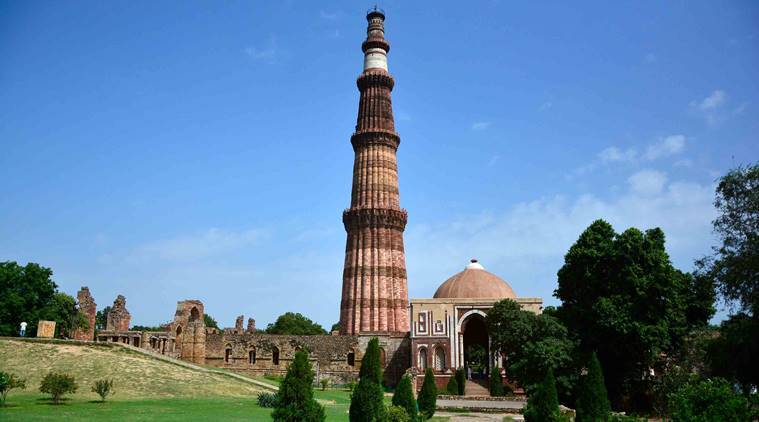The Ram Janmbhoomi dispute, having been resolved in November last year has not only righted a centuries-long unjust but has opened the floodgates for Hindus to reclaim innumerable other temples, which have historically borne the brunt of Islamic invasions and destructive supremacy of foreign rulers. The most recent of these is the demand for Hindus to reclaim Dhruv Stambh and worship in Qutub Minar Complex.
A case has been filed in Delhi’s Saket court, on behalf of Lord Vishnu and Lord Rishabhdev to reclaim Dhruv Stambh, the original structure. The Government of India and the Archaeological Survey of India have been made defendants in the case. According to the petitioners, the Quwwat al-Islam mosque, part of the Qutab Minar complex has been constructed after demolishing 27 temples of Hindus and Jains. The petitioners have demanded the right to restore and worship the deities lying there.
The Qutub Minar complex was first made by Qutb-ud-din Aibak, the first ruler of the Slave Dynasty, and was added to by many subsequent rulers. According to historical sources, the Quwwat al-Islam mosque was built in 1192. Inscriptions record that 27 Jain and Hindu temples were torn down for its creation. Pillars from the destroyed temples were reused and the Hindu images were plastered over with geometric designs.
‘Qutub Minar’ means ‘victory pillar’, and the central Mosque inside Qutub Minar is known as ‘Quwwat Ul Islam’, which translates to ‘Power of Islam’, indicating the victory of Islam over Idol worshipping Hindus.
On Tuesday, the petitioner argued that there is historical and ASI evidence in the case that proves Qutbuddin Aibak demolished temples and built mosques to show the power of Islam. According to the petitioners, there are still hundreds of fragmented idols of deities lying there.
The case has been filed for the restoration of temples under the fundamental right to religious freedom, in accordance with Articles 25 and 26 of the Indian Constitution.
The petition cited the previous year’s Ayodhya case verdict, which observed that the worshipers had the right to file a suit to preserve the property of the deity. Even though the government has a legal obligation to preserve the historic monument, the law allows worship according to the religious nature of that preserved building.
The petitioners have prayed that the central government be directed to form a trust, which will restore the deities in the Qutab Minar complex and organise and administer their worship. The petitioners have also prayed that government and ASI should be prevented from interfering in worship, repair and construction of the temple in the complex.
Apart from this, there are aggrieved subjects all across the country who are filing cases for reclaiming their places of worship. A PIL has been filed before the Supreme Court seeking to render the Places of Worship (Special Provisions) Act, 1991 null and void. The law in its current form states that all places of worship, irrespective of religion, shall continue to operate, without hindrance and obstruction, as the exact worship sites which stood on August 15, 1947.
Thus, if and when the said Act is repealed, the Kashi Vishwanath Mandir in Varanasi that was converted into the Gyanvapi Mosque and the Keshavnath temple in Mathura that was converted into Idgah Mosque, along with countless other examples of medieval plunder, will be free to be restored to their former glory.
